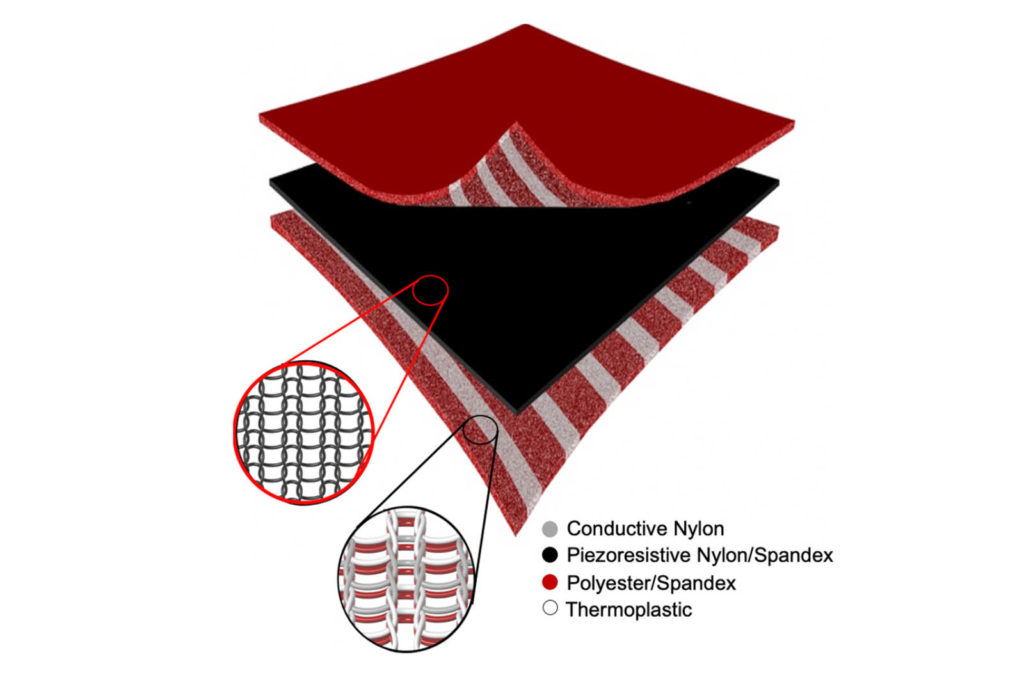
Using a novel fabrication process, MIT researchers have produced smart textiles that snugly conform to the body so they can sense the wearer’s posture and motions. By incorporating a type of plastic yarn and using heat to slightly melt it (a process called thermoforming) the researchers were able to improve the precision of pressure sensors woven into multilayered knit textiles, which they call 3DKnITS.
They used this process to create a “smart” shoe and mat, and then built a hardware and software system to measure and interpret data from the pressure sensors in real time. The machine-learning system predicted motions and yoga poses performed by an individual standing on the smart textile mat with about 99 percent accuracy.
Their fabrication process, which takes advantage of digital knitting technology, enables rapid prototyping and can be easily scaled up for large-scale manufacturing, says Irmandy Wicaksono, a research assistant in the MIT Media Lab and lead author of a paper presenting 3DKnITS.
The technique could have many applications, especially in health care and rehabilitation. For example, it could be used to produce smart shoes that track the gait of someone who is learning to walk again after an injury, or socks that monitor pressure on a diabetic patient’s foot to prevent the formation of ulcers.
“With digital knitting, you have this freedom to design your own patterns and also integrate sensors within the structure itself, so it becomes seamless and comfortable, and you can develop it based on the shape of your body,” Wicaksono says.
To produce a smart textile, the researchers use a digital knitting machine that weaves together layers of fabric with rows of standard and functional yarn. The multilayer knit textile is composed of two layers of conductive yarn knit sandwiched around a piezoresistive knit, which changes its resistance when squeezed.

Following a pattern, the machine stitches this functional yarn throughout the textile in horizontal and vertical rows. Where the functional fibers intersect, they create a pressure sensor, Wicaksono explains.
The high accuracy of 3DKnITS could make them useful for applications in prosthetics, where precision is essential. A smart textile liner could measure the pressure a prosthetic limb places on the socket, enabling a prosthetist to easily see how well the device fits, Wicaksono says.
He and his colleagues are also exploring more creative applications. In collaboration with a sound designer and a contemporary dancer, they developed a smart textile carpet that drives musical notes and soundscapes based on the dancer’s steps, to explore the bidirectional relationship between music and choreography. “I’ve learned that interdisciplinary collaboration can create some really unique applications,” he says.
This research was supported, in part, by the MIT Media Lab Consortium. It will be presented at the IEEE Engineering in Medicine and Biology Society Conference.
 TEXTILES.ORG
TEXTILES.ORG


